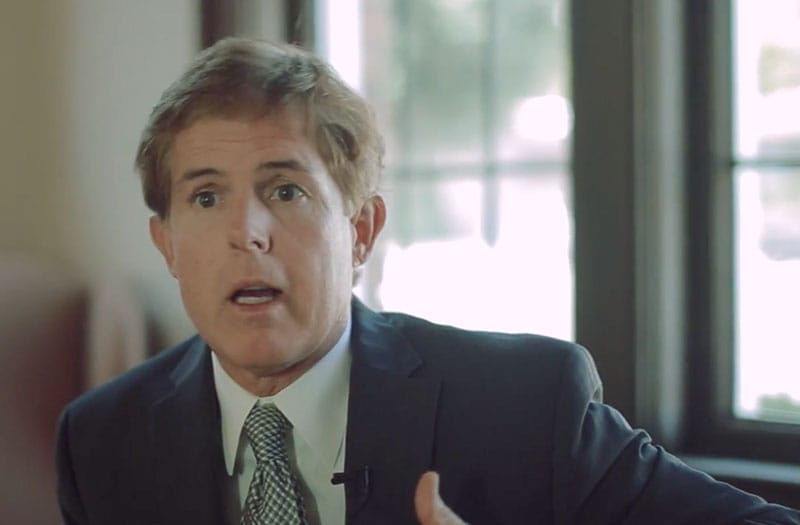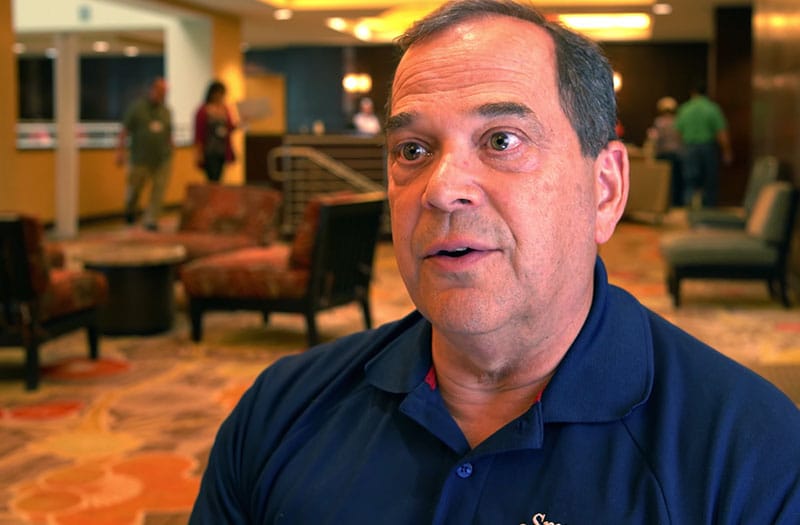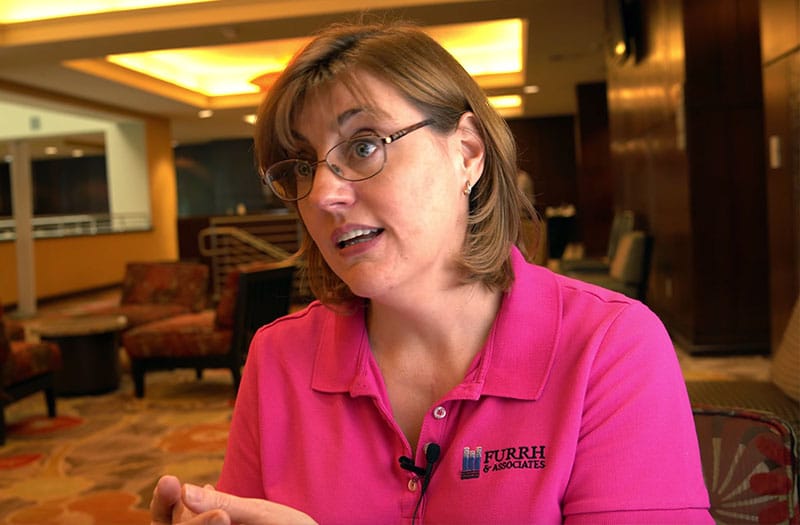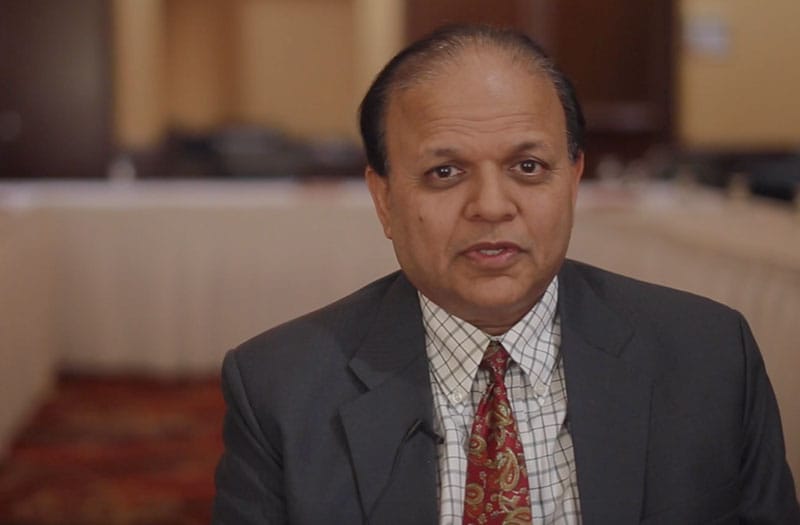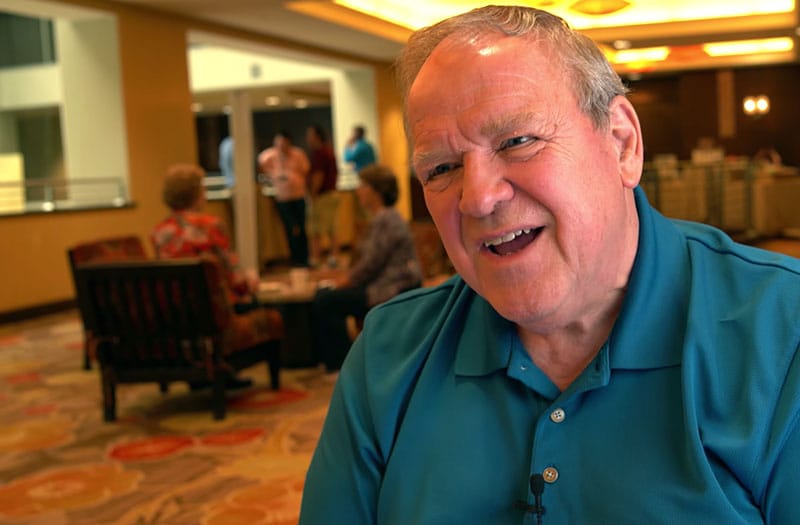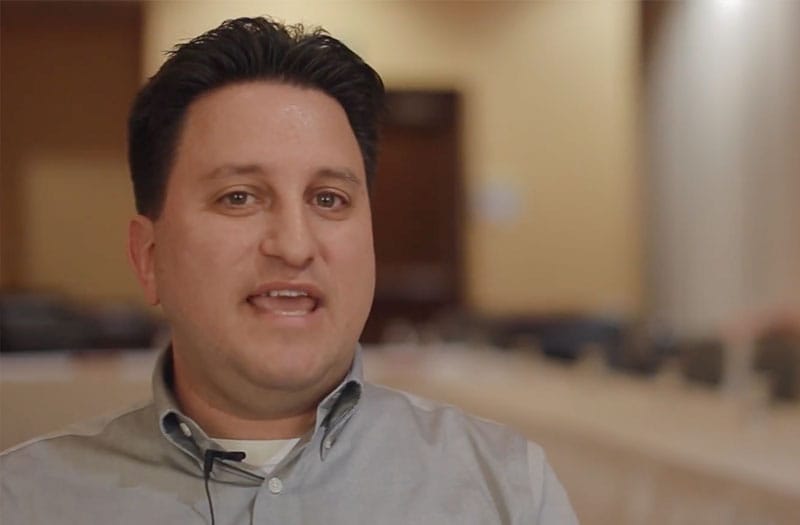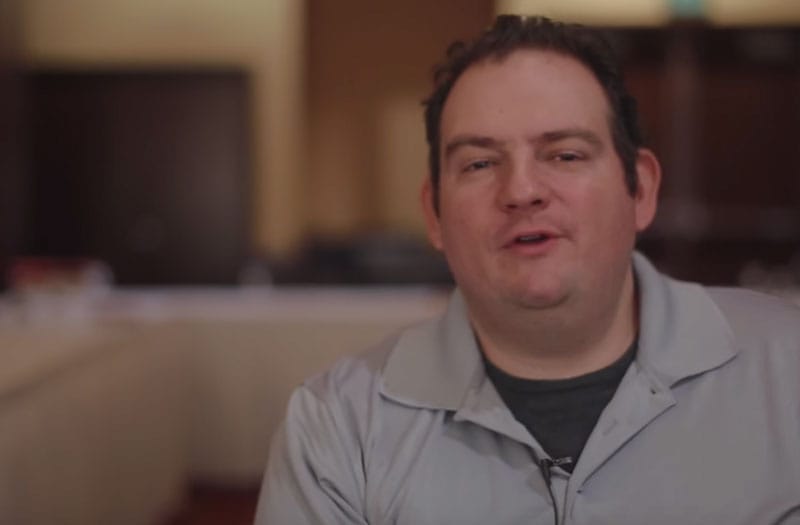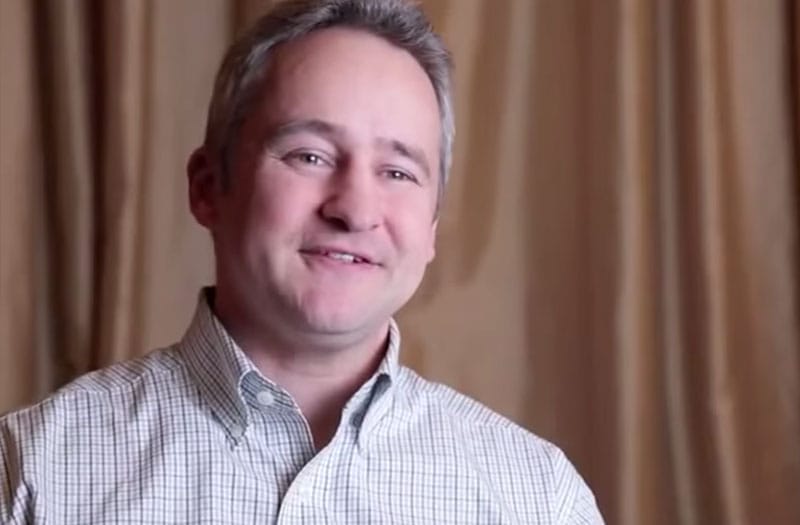I was drawn to accounting because it’s black and white, accounts have to balance and it’s far more logical than economics. When I decided to pursue the subject in college,…
Accountants
Like accounting, successful CPA practice management is based on its own set of principles and procedures. When these principles and procedures are known and put to use, an accounting practice thrives and prospers. When they are not, growth can stagnate, staff conflicts can arise and revenue and profitability are likely to suffer.
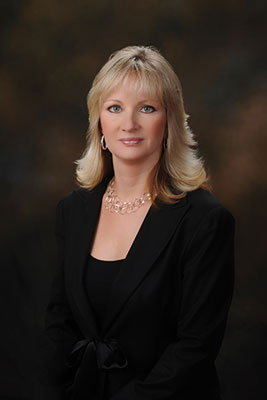
“Collections are up by 32% and profitability has increased by 600%.”
I started my CPA practice in 1995 with a home office and a Yellow Pages ad. Business was slow the first couple of years but then doubled the next four years. After moving into office space and hiring too many staff who did too little, my expenses outpaced my revenues. I was working ridiculously long hours for no return.
My practice was on the same property as my home. At the time, I had a husband and three small children at home. During tax season, I would come home, make dinner, get the kids to bed, go back to the office and work till 2 a.m. The next morning, I would get up at 6 a.m. and do it all over again. My husband complained that I didn’t love him and my friends and family never contacted me during tax season.
Managing a business was something I hadn’t been taught in school and I didn’t have a clue. There were 12 staff reporting directly to me and whenever there was a problem, it landed right on my desk. The staff expected me to find and fix their mistakes or do their work myself.
I had one accountant who couldn’t get her work done. She would pile files on top of files with the ones at the bottom neglected until the client started screaming at me eight months later. She was causing me to lose business.
I regularly received IRS notices of errors in our clients’ returns. These notices included penalties and interest which I had to pay myself. Since the staff got paid regardless, they didn’t much care about their errors. They had the same attitude about their clients’ unpaid bills; it didn’t matter because they got paid anyway. After four years, I was burned out. By my calculations, if I had made a dollar an hour, I was lucky. I wanted to sell the practice and work for somebody else.
A broker who bought and sold accounting practices used to call me every six months to see if I was burned out enough to sell my practice. He used to say, “You are working for your employees,” and almost convinced me to sell. Thank goodness I didn’t. Instead, I looked for a company which would teach me how to run a practice and in 2004, I found Sterling. They specialized in accounting firms and what they said made sense so I became a client. That was when everything started to turn around.
With my input, Sterling developed an organizing chart for my practice with exact functions and responsibilities defined for every employee. The staff knew what was expected of them and why. Once we had that in place, we were able to implement a statistical management system which objectively measured the performance of every employee.
We tried to correct the staff accountant who could not complete her work, but she was uncorrectable. I let her go along with several other non-producers. The IRS notices decreased and I stopped losing clients. Using Sterling’s hiring and testing procedures, I was able to hire the right staff.
We implemented a compensation plan based on production. Now the staff accountants get paid a percentage of what they personally produce. If a client’s bill doesn’t get paid, the accountant doesn’t get paid. If the IRS fines us with interest for an error in a client’s return, the tax preparer pays. Once I put the responsibility back on the producers, they became accountable for their work. The difference was like night and day.
By the same token, we implemented rewards for those who were productive. Those staff who make their production goals receive bonuses that can add thousands of dollars onto their annual compensation. We also play staff games in the office and when certain goals are reached, I hand out movie tickets, dinner coupons, massage certificates and more money. We try and make it fun, especially during tax season.
My consultant observed an inefficiency in our tax preparation area. We reorganized the area to boost the number of returns which could get done each week. As a result, the tax preparers were able to double their weekly billable hours. The capacity of the practice increased without adding staff.
I was freed up enough to expand into retirement planning which I love and is very profitable. We are in the off-season now and have so much work, I have to hire another preparer. I never imagined being so busy at this time of year.
Now I have half the number of staff with higher billings. Collections are up by 32% and profitability has increased by 600%. Before Sterling, my partner used to bill $3,000 a week and we thought that was a lot. This past tax season, she regularly billed $15,000 per week. Back in the day, had I told her she needed to bill $15,000 per week, she would have either shot me or seriously thought I had lost my mind. Now we do it with ease; it’s fun and we all get to go home to our families by dinner time, even during tax season.
My quality of life has completely turned around. I work less than 40 hours a week regardless of tax season. There is no way I could otherwise handle the load three teenagers and a two-year old put on me. Despite the reduced hours, I am making more money than ever before. Most importantly, I feel happy and lucky in my life and in my practice. For that, I thank Sterling.
Rochelle Chandler, CPA, Texas
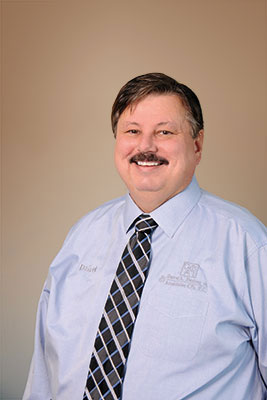
“I typically work just 40 hours per week during tax season.”
One Sunday, as I was leaving home to work at my CPA firm, my 12-year-old daughter plastered herself against the backdoor and begged me not to go. That was a light bulb moment for me. I had been putting in 14-hour days at the office, 7 days a week during tax season and 70 hours per week in the off season. My wife, who also had a full-time job, was having to do more than her fair share to help out. I felt if I kept on at that pace, my kids would grow up and I would miss out on some of the really great moments that I wanted to be a part of; I needed to be a bigger part of my family’s lives.
I had started my own practice after resigning from another CPA firm where I had been working. I was the firm’s highest producer but another accountant—a much lower producer but better golfer, with the money to buy into the practice—had been offered a partnership instead of me. Tired of the firm’s politics, I left.
Now, as the leader of my own practice, I felt I had to do everything myself. Even though I was creating a bottleneck, I personally reviewed every financial statement and every document, and I prepared every tax return before it went out the door. I wanted to make sure it was done exactly right. Since my staff weren’t as good or experienced as I was, it was faster to do the work myself and use them as support staff instead. I could have trained them but there was no time during tax season and I wasn’t sure where to start.
Despite my long hours, the practice was only marginally profitable. I paid the bills, made payroll and my family never went without, but that was it; there were no extras. Cranky and unhappy, I wanted to be with my wife and children, take vacations with them and really get to spend time just being together, but I felt I was spending all of my time working or thinking about work. Every Sunday I’d go into the office to tackle a 15-foot high stack of tax returns piled against the wall. I’d start from one end and work all day but by the next Sunday, the stack would be just as high again.
Because I was maxed out, our growth was limited. I didn’t look for more business or try to expand. I knew I couldn’t handle any more.
I thought there had to be an easier way to run the office and I began to look for a practice management firm. I found out about Sterling’s program and talked to other CPAs who had worked with them. In the end, I signed up.
Sterling helped me realize I couldn’t get over the hump until I quit trying to do it all myself. I had to train the staff and delegate. It might take more time initially but eventually I would be freed up. With my consultant’s help, I promoted our front desk worker to be the office manager. I even had her travel with me to Sterling’s office to get one-on-one training so we could work better as a team. I made sure she was trained and delegated duties to her. I put all of my trust into her and didn’t undermine her authority. When the staff came to me with questions or issues related to their job, I sent them to her. Even today, my youngest daughter who now works for the firm reports directly to the office manager.
I also figured out my staff had been blackmailing me. Before Sterling, I didn’t think I could get by without them so I’d let them dump their undone work on my desk and stayed at night to finish it while they got to leave at a reasonable hour. I quit allowing them to pass off their unfinished work, which helped me to be able to go home for dinner with my family.
One day, my lead accountant, who wasn’t very competent, came to me and threatened to quit if I didn’t make the changes he wanted. I showed him the door instead. Knowing that I was on the right path, I realized I didn’t need that type of person working for me. Using Sterling’s hiring methods, I was able to replace the low quality staff with good people who could do their jobs in an efficient manner.
Sterling didn’t just give me advice, they actually helped me get their program done. Since there had been no standard procedures in the practice, everyone had their own way of doing things. One employee might take two hours to complete a job while another did it in half the time. This was inefficient and caused billing discrepancies, which meant we were less profitable. Sterling helped us standardize our processes and trained the staff on them. Being on the same page, we became more productive and efficient.
Within 18 months of starting the program, my family and I took our first vacation in years, a cruise to the Caribbean islands. I had let my two daughters pick our vacation spot and did so for the next several years. When we got back from our cruise, the practice was still functioning as if I had never been away; this would have been inconceivable before Sterling. At this point, I was able to start taking two weeks off per year to spend time with my family.
Nowadays, I typically work just 40 hours per week during tax season and less than 30 hours per week in the off season. I take off six weeks every year to travel with my wife, spend time with my now grown daughters and putter around the house—all without worrying about my practice. I know my staff can handle any fire or client issue that arises while I’m away. I have full confidence in their abilities.
My youngest daughter tells me we were lucky to have found Sterling before she and her older sister were fully raised; I agree. When I started their program, I thought I was satisfied with the level of income I had been making; all I wanted was to be able to spend more time with my wife and kids. But I ended up making more money, too. When the firm’s profitability doubled, I realized the program principles which had helped me regain my family life had also helped me build a thriving practice along the way.
Dairel L. Denton, Jr., CPA, Missouri

“My stress level is down. I don’t feel hopeless or lost anymore.”
I had multiple problems in my business. I was overworked and overwhelmed. I couldn’t get out of this pit that was just getting deeper and deeper. I had gotten into borrowing money at the end of the year, then at tax season, I would pay it back. Then I would borrow again. It was a vicious circle and I began to wonder “what am I working for?”
Staffing was a huge issue. But I was also the issue. I didn’t trust my staff. Everything they did I would check, then I would send it back. Then they would have to do it again, then I would check again. It was pretty standard that each piece of work had to be checked twice by me.
One employee was very covert. She would flatter me like crazy then stab me in the back. She wouldn’t follow any rules and would bad-mouth me to the staff and the clients. She eventually left, opened her own business and she told told clients to come with her when she opened her business. She stole a couple of hundred clients.
Another very sweet girl would hide all her mistakes. Even when a client called her about a big problem, she would never tell me. It wasn’t until they were huge that I would find out. Other staff, when given jobs to do, would give me guarantees and promises of getting it done and then at the last minute the work would not get done and would be dumped on me to finish. I ended up working every night and all weekend.
So, yes, I had some staffing issues.
One day I saw a letter from one of Sterling’s clients and the person in the letter had similar problems to me. Sounded like their problems were solved and I wanted that. I thought “who is this and how do they know what I need?” so I started with Sterling.
After receiving training and consulting, the first thing I did was to make the staff accountable for their work. I told them they had to bring in 3 times more than they were being paid in order to make it viable.
An employee who costs the business money isn’t worth it. Now I tell every new person I hire that their pay will be based on production. “Here is your base pay and we pay more on bonus — it’s all about production.” We put in a pay system based on production with base pay and then bonuses based on higher production. I set the expectation and the staff either met it or they didn’t. Anyone who didn’t want to follow that pay structure left on their own.
We immediately started to see an increase. That was in 2016, the year when the bad staff left, and it turned out to be our best year up to that point. We put in statistics and ended up with a 15% increase over 2015.
Last year (2017) we doubled production over the previous year (2016), without adding any staff. Since then, I added a few more staff to take the weight off me (we are now up to 18 staff). We were up very nicely in 2018.
A key point with the Sterling training is how to hire. Sterling’s personnel testing is the only way I hire now. I even had someone who I have known for years come to me to get hired and I did not hire her because she did not pass those tests.
My stress level is down. I don’t feel hopeless or lost anymore. Before, I felt like I was begging for help, but not anymore. I no longer have that desperate dying feeling.
I now have a lot more personal time. I had a family emergency and I was able to take the time off to go and deal with it. My staff competently handled things while I was gone. I don’t even know what I would have done before. It would have hurt the practice for sure for me to be away from it. Now I trust my staff to handle the practice when I am not there.
I feel like Sterling is really invested in helping us and in our success. I used to be very skeptical. So many people try to sell things and it just never seems real. Sterling is real.
I would recommend Sterling because I want others to have success. I have a big thing for small businesses. I want practice owners to have time for their family and I want them to do well. So I would say to any practice owner to try it for yourself. Contact Sterling and arrange to get a copy of their free DVD and complimentary consultation. You don’t know what you’re missing until you try it.
Shelly D Beber, EA, Washington
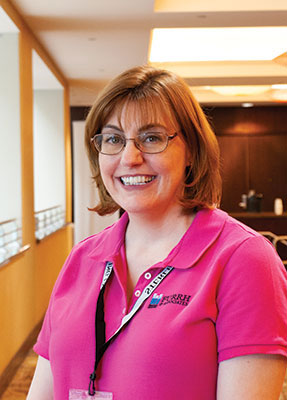
“The amount of money that ends up in my pocket has increased by six times.”
Some accounting firms have trouble getting work done and out the door on time. In my practice, we couldn’t get the work done at all.
I bought the practice in 2006 from its two owners who wanted to retire. I had been a staff accountant there and although I was a competent accountant, I had no previous experience running a business. When the partners left, the practice spiraled out of control. We couldn’t find files, we couldn’t find past returns to do current returns, and we couldn’t find the bookkeeping to do Workers’ Comp audits. It was chaos.
Additionally, I had three bookkeepers and a receptionist; none of them took any responsibility for anything. Everything fell to me. When the bookkeepers had completed their work, they wouldn’t tell me and they wouldn’t ask for more. It wasn’t that they needed direction from me, they knew what to do; they just would not ask for more work. Instead, they waited for me to give them more and did nothing until I did.
The receptionist was only willing to answer the phone and greet clients, otherwise it was not her problem. I was the one who washed the coffee pot each day. Like clockwork, she got sick and had family emergencies during spring break and tax season. When she left the practice to move out of state, we went through another five or six receptionists. They didn’t stay because they couldn’t stand the confusion and the constant calls from irate clients.
During the off-season, I worked 60 hours a week. During tax season, I worked from 6 a.m. to 11 p.m., seven days a week. After three years of rarely being home, my husband filed for divorce. In my absence, he had developed a close relationship with my teenage daughter who now hated me. That was my wake-up call.
After my marriage fell apart, I wanted a change. Already familiar with Sterling, I sent away for their DVD and got an introductory consultation. In January 2013, I did their full executive program which included management courses and tailor-made consulting. Then I asked Sterling to come to my practice and train the staff. The training brought all the staff on board at the same time. Things started to get better fast.
Sterling started in on untangling the chaos in the practice and getting us organized. We determined the duties of each staff member and made them job descriptions. Previously, the staff didn’t know what their jobs were or what the other staff’s jobs were; now they do. Sterling laid this all out on an organizational chart which we have hanging up in the office. Whenever a staff member has a question about who does what, he or she can look at the organizing board to find out.
We implemented the management by statistics system which enabled me to assign a statistic to each employee to numerically judge their productivity. I was surprised to discover some of the people I thought were good producers were not; they were actually goofing off a lot. Since they had been so sweet, I had thought they were good staff. I had no idea that I had been personally carrying the firm on my own shoulders.
Sterling advised me that the technical staff should be billing an amount equal to three to five times their pay. When my consultant and I looked at the numbers, we saw they were not even producing twice their pay in billable hours. Using Sterling’s personnel tests, I was able to replace the low-producers with creative, energetic and upbeat staff. Although job applicants can fool me in an interview, they cannot fool the tests.
I learned a lot about people and how to motivate them. Sterling taught me to utilize staff by having them do work which matched their personalities. For example, I had a very outgoing employee who I had put in a back office to do bookkeeping. She was miserable. I moved her to a position where she has to interact with clients regularly. She’s much happier and much more productive.
It has been almost a year since I started with Sterling. In that time, my profitability—the amount of money that ends up in my pocket—has increased by six times. Now we get our work done and out the door on time. My staff don’t wait for me to tell them what to do. Instead, they are motivated and come to me with ideas and ways to improve our service to clients. We are about to open a second location. A year ago, the thought of opening a second location would have been inconceivable.
Better yet, I am happier, less stressed and have more time for family and friends. But the most valuable benefit was one I never expected: my relationship with my daughter has completely turned around. We get along great. Even though she is now away at college, she calls me three to four times a day just to chat. I attribute the change in her to the change in me.
Thank you, Sterling, for giving me my life back.
Kim Furrh, CPA, Texas
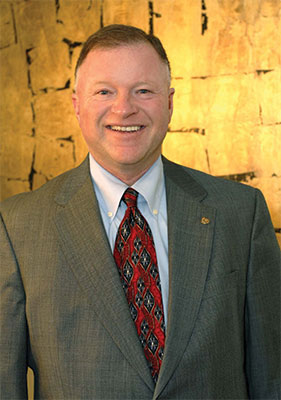
“I am always productive. I’m never just sitting here spinning my wheels.”
I am someone who enjoys working with numbers and I also enjoy teaching people how to understand the benefits of using numbers to build prosperous businesses. So I decided to join the profession that allows me to do both.
After graduating from college, I went to work for a regional firm in the San Francisco Bay area. I then moved to Bend, a city of about 80,000 in central Oregon, and have had my own firm there since 1982. There are now eight of us working in the office, including another accountant who became my partner in 2013.
Although we are quite successful now, it wasn’t always that way. The problem wasn’t how to get more billings or increase my revenues, it was that my practice was a mess. I wanted more order in my life. Instead of me running the practice, the employees were running me, the clients were running me, and I was working a lot of unproductive hours. I knew that if I could put more order into my life, the billings, collections and everything else would straighten itself out.
Then one day while I was on the road, I saw an ad for Sterling in an accounting trade publication. I filled out the postcard, but wound up leaving it in the hotel room. I knew that it was important enough that I not miss this opportunity to turn my practice around that I went back to the hotel room to retrieve the card and get it in the mail.
So, on New Year’s Day 1998, I found myself in Los Angeles watching the Rose Bowl on the hotel room TV so I would be ready to start my Sterling training the next morning. I don’t recall who won the Rose Bowl that year, but I do know that attending the training helped turn me into a winner.
With the Sterling program, I felt like I bought an MBA degree along with a psychology degree. I got so many great business ideas that I probably only implemented a third of them within the next two months. The biggest thing I realized in the training was that most of the problems were caused by me, not my staff or clients. I was certainly glad that through Sterling I had systems to take back with me and make things better.
When I returned home, I immediately started putting what I learned to use. A big part of the changes was that I was better at confronting everyday problems that I used to just put off. Internally, I implemented more statistical information by employees so I could see who was being productive and who was not. With clients, I stood up for myself more so we had fewer write-downs and our collections got better.
All of this made a big difference in the way I felt when I went into the office in the morning. Instead of being nervous, I was quite calm about going to work and my staff saw the difference. They were just doing what I let them get away with. Since I stopped letting them get away with substandard performance, they immediately fell into line, the confusion dropped off and the productivity increased. So, even though I was out of the office the first two weeks of January and I spent a good deal of time implementing the new systems, we made it through tax season without missing a beat. Since that time, our billings and collections have increased every year and overall our revenues have tripled.
The key to the Sterling program is that it is centered on making you a better business owner.
Most of us in the accounting profession are only trained to be good technicians; we are not trained to be business owners. But when you own your own practice, you’re not just an accountant anymore. You’re also in the business of accounting and too many people forget that. Sterling trains you on what you need to be a successful business owner. This encompasses all aspects of the organization including selecting and training personnel, marketing your services, smoothing out workflows and motivating staff to reach the goals you have set. It also extends to your life outside the office, since it does no good to reach your business goals but be too burned out to enjoy them. So, for example, one of the first things my consultant insisted upon was that my wife and I have a date night each week. My wife loved the idea, and 17 years later we still have our weekly date nights, even during tax season.
Another huge part of the program is sometimes we, as owners, need advocates, and Sterling will be your best advocate for your practice. I mean that sincerely. For any leader, sometimes you need another person’s input that you are doing the right thing. You can’t talk to staff; that would be a disaster. Sterling helps you with that, giving you an independent person to bounce ideas off of and help guide you in taking the right actions.
Then there are all the other aspects of the Sterling program which touch upon each part of the business. For example, there’s the new employee testing service which helps you select who to hire. There have been times when I thought I knew better than what the test showed and went ahead and hired someone anyway, only to regret it later. Through Sterling, I also developed a better process for what questions to ask prospective clients. I’m keener and this helps me make a better business decision about accepting new clients. Sometimes there are people you don’t want to work with, and it is good to know this ahead of time rather than grinding away with an unproductive relationship that doesn’t satisfy either you or the client.
For me, even more than tripling my revenue, the biggest benefit has been in reaching my original goal of reducing the confusion in the office. I think I work less hours than I did before Sterling, but the number of hours worked isn’t what matters. It’s whether the hours I am spending in the office are productive or not. And they are. Whether I am doing billable work or the administrative functions of being a business owner, I am always productive. I’m never just sitting here spinning my wheels. There is no wasted time. There is no wasted effort. It is not bad working long hours when you know you’re getting a return for it.
Steve Callan, CPA, Oregon

“Using the Sterling program has given me back control over my life.”
I started my own practice with dreams of being successful, of making a good income, being in control of my life and having the freedom to pursue my own goals.
After sixteen years of hard work and long hours, I was far from successful. The practice was small, disorganized and inefficient. I had trouble getting the work out the door, I was not making money commensurate with the hours invested, It had finally reached the point where I was ready to close the practice and leave public accounting, since I could make more money working for someone else than I was making working day and night for myself.
Before giving up, however, I decided to give it one more shot and signed up with Sterling. I did Sterling’s program so I could learn the right way to run my business before suffering through another grueling tax season. I found out how to motivate the staff, organize the office for more productivity and reduce the stress. The information I received from Sterling was not readily available to me from college or from our
professional practice management seminars. It was unique and effective.
Applying what I had learned produced an immediate and dramatic improvement. Morale in the office improved. Staff stopped bickering and started working together as a team. They started taking more responsibility for the quality of their work rather than leaving it all up to me to find and correct their mistakes. In that very first tax season, I already started cutting way back on my hours, while making a lot more money. By the next tax season, I was going home at 6:00 pm despite preparing far more returns than previously.
The practice has continued to grow ever since. Our gross is now more than three times what it was when I started with Sterling, but because of increased efficiency, we have accomplished that without adding any personnel. It has gone from making modest money to being very profitable, in spite of today’s economy. More important than just the money, however, is that using the Sterling program has given me back control over my life.
As a result, I can live a more balanced life. I make a very good income and still have the time to spend with my family and to do what is important in life. Even during the tax season, everyone in the office gets enough sleep rather than running themselves into the ground.
What I have learned is that being a competent accountant and hard work are important ingredients in having a successful practice, but they do not guarantee success… Sterling taught me what I had been missing and got me on the road to living the life I dreamed of when I first decided to open my own practice. Now I am having fun.
Robert Naugler, CPA, Idaho

“Most importantly, I have a life again.”
After years in the workforce, I decided to get my accounting degree and open my own CPA practice. I liked accounting and working with people, but I didn’t know managing a practice would require much more. I was understaffed and reluctant to delegate. So, I wound up doing almost everything myself.
I barely survived the hectic, high-stress tax seasons. When I wasn’t working, I was sleeping. When I did sleep, I dreamt about working. After every tax season, I thought about selling the practice. I was making money, but not enough. Because I worked so many hours, I worried about taking on new clients. Stuck, I was unable to grow.
I had an acquaintance who owned a CPA practice which I watched grow. I asked her how she she did it and discovered she was a Sterling client. She suggested I check into their program. I watched their management DVD which hit the same points I wanted to address, such as the small return on my long hours. After an initial consultation, I signed on as a client.
Sterling organized the office, reduced inefficiencies and helped me find the right staff. With better staff, I was more willing to delegate knowing the work would get done correctly. Before Sterling, I would randomly hand out bonuses after tax season. My consultant showed me why this method would not boost production. Instead, she and I devised a monthly bonus plan based on each staff member’s productivity, including the accounting staff . Everyone knew what was expected and could control their bonuses by being more productive. This meant a
whole lot more to the bottom line.
My practice has grown every year since starting with Sterling. Sales have increased by 316% and net profit by 604%. Most importantly, I have a life again. Since my staff run the practice, my husband and I have been able to travel to China, Italy and Quebec while my practice continued to achieve its revenue goals.
Sterling helped me create a much more valuable practice…They are like an experienced outside partner who stayed with me to build my business.
Sandy McIlvain, CPA, Texas

“Thanks to Sterling, life is fun again.”
Disillusioned with the CPA firm where I had been a partner, I opened my own practice so I could control my destiny. I hadn’t given much thought to running the business; I just assumed everything would fall into place. But that was not to be the case. As it turned out, personnel was my biggest problem.
The office felt like slog due to staff inefficiency and mistakes. I figured since I was the one with the answers, I should be the one to fix their work. As a result, I was always cleaning up their messes, In fact, I spent so much time doing their jobs, I didn’t have time to do mine, which stymied the firm’s growth.
I couldn’t seem to find good staff. And because we were in a rural area, I didn’t expect to. For that reason, I settled for whoever happened to apply. Working long hours, I was frustrated and exhausted with little energy for other areas of my life. These were the issues I struggled with when I requested a copy of Sterling’s management DVD. Watching it, I was struck by their explanation of the different types of staff and their effects on the practice. That’s when I became a Sterling client and started to turn my practice and my life around.
It wasn’t one aspect of the Sterling program that had impact, it was several. For instance, based on the program principles, I began to pay the staff based on the work they actually did, such as billable hours. One of the CPAs who was initially concerned about this change, increased his billable hours by 50% the first year and doubled them the next. My office manager, whom I paid based on an increase in collections, became a pit bull on bringing in the income.
I also learned that doing the staff’s jobs wasn’t solving the problem, but promoting it. Although it’s still a work in progress, now when my employees bring me a problem, I insist they also bring a solution. Finally, Sterling trained me on how to find good people in the first place. Their hiring techniques and testing have made all the difference.
Our annual billings have almost doubled, and are still rising since starting with Sterling eight years ago. I am freed up to act as a business consultant, which I love. And I am definitely working fewer hours and taking advantage of that. Thanks to Sterling, life is fun again.
Mark L. Granger, CPA, Maryland

“Our billings and profitability have more than tripled.”
I opened my CPA practice in 1996 and after years of hard lessons, I realized being a good CPA is not the same as being a good business owner.
Since I didn’t have much help early on, I had trained myself not to delegate. As I added staff, I became a control freak and had everything in the office come across my desk. During tax season, I’d work until 3:00 am and be back by nine the next morning. Because past attempts to bring in good staff had failed, I was afraid to add more.
Like many CPAs, I had never learned how to really communicate. To avoid conflicts, I’d write down clients’ fees rather than bill for the work we had done. If our fees totaled $2,300 but we had invoiced the client $1,000 the year before, I’d just bill them $1,000 again. I was “too busy” to listen to complaints or explain the price increase.
In 2004, after a brutal tax season, I looked at the revenues and my financial condition and realized, despite killing myself for three months, I was no further ahead. Devastated, I began searching for answers. That was my frame of mind when I watched a practice management DVD from Sterling and became a client.
We first tackled the client fees head on. Sterling taught me the value of unflinchingly dealing with these issues and our clients and how to confidently do that. We also addressed the ambiguity in our office of who was responsible for which tasks. Things wouldn’t get done or would get done inefficiently. Sterling helped us create an organizing board that spelled out each employee’s responsibilities and our expectations for them. During this process, I discovered there were functions we should have been doing but weren’t, like marketing. We began to promote our business and have seen tremendous results.
For a CPA, hiring can be intimidating because no one wants to make a mistake. Sterling taught us how to attract quality staff and helped administer personnel testing with our applicants. These systems provided us with the insights and confidence to make the right hiring choices.
The reason why I’ve been a Sterling client for 13 years: Our billings and profitability have more than tripled, even though I work fewer hours each year… Because of my relationship with Sterling, I’ve become a much better business owner. Because of the consulting, training and real-world experiences Sterling provides for me as a business owner, I’ve become a much better CPA.
Don Franty, CPA, Pennsylvania
READ MORE SUCCESSES
When I bought my practice in 2003, I inherited a couple of big businesses, a lot of mom-and-pop shops, a couple of staff and a bit of confusion. That first…
I have been in public accounting for thirty years. During that time, I have received my CPA, CFP, PFS and CVA certifications. Those certifications help me provide the professional service…
I received my accounting degree in 1982. Six years later purchased the firm I had been working at since my college days. By the end of 2011, I was burned…
“Martin and I were both working at Cigna Healthcare, but missed the challenge and excitement of public accounting,” says Todd Raymond, CPA, describing how he and fellow CPA, Martin Henry,…
Shortly after starting my practice in 1989 I was invited to attend the National Large Tax Practice Group (NLTPG) convention and the National Association of Enrolled Agents (NAEA). My practice…
I’ve been a Sterling client for the past two years. The growth of my practice was such that I was having a lot of stress put on me because of…
I spent six years working for three partners who’d sit in their little rooms calmly doing their accounting jobs with little thought of expansion or much else. I was frustrated….
I have a small practice in Lake Providence, a rural town of 5,000 along the Mississippi River in the Northeastern corner of Louisiana. I opened the office in 1995 and…
I opened my office in Boulder, Colorado eighteen years ago. I currently have six year-round employees and add another four or five during tax season. About six years ago, I…


